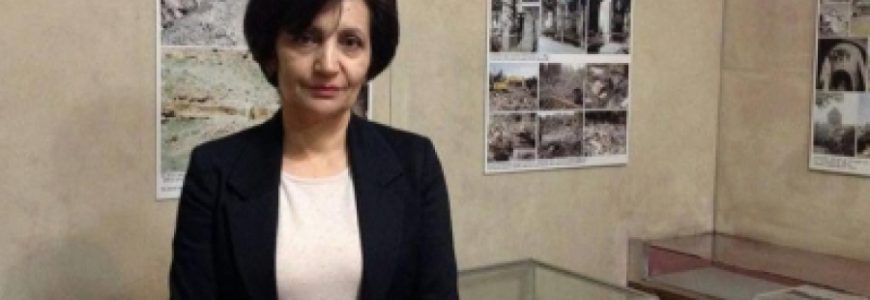Exhibition in the Museum of History and Local Lore
In recent years, on May 18, Artsakh, together with the whole world, celebrates the International Museum Day. This day was proclaimed on the initiative of UNESCO and the International Council of Museums (ICOM) to facilitate the increase in the number of museum visitors, and consequently, increase the role of museums in the development of society. On this day, museums serve visitors for free, conduct interesting events.
Each year the holiday has its own specific theme, dedicated to the issues of museum activity. This year, the theme was “Museums and controversial history: talking about the complex in museums.”
The Artsakh State Museum of Local History has organized an exhibition on the topic “Azerbaijan outside civilization”.
According to the director of the museum, candidate of historical sciences Melany Balayan, the exhibition has been operating since May 15, but the official opening took place on May 18. “The theme of this year’s Museum Day reminded us of the most painful issues of our people: the territorial, cultural and, naturally, human losses that we had as a result of genocidal actions committed by our neighbors outside of civilization,” the director emphasized. The exhibition features photographs of large cultural centers that once acted on our lost territories – during the heyday and at the present time. Although the exhibition is held under the title “Azerbaijan outside civilization”, there are photos of Armenian monuments of Western Armenia that once played an important cultural role and were of great value, and today are in a deplorable condition. The country, called Azerbaijan, was established in 1918 mainly on Armenian lands and was constantly pursuing the goal of destroying the Armenian presents in the occupied territories. This policy continues to this day. According to Melany Balayan, there are so many Armenian monuments in these occupied territories that even the policy of the Turkish Azeris for the destruction and partial appropriation of them for decades does not yield the expected results: there are many monuments, and they are located in such places that somewhere it is preserved, or new artifacts are revealed from the bowels of the earth, which testify to the belonging of these territories to the Armenian people. The policy of destroying monuments already says that this country is far from civilization, not tolerant and is not able to appreciate the cultural heritage.
Of the exhibited photographs, one can clearly see the same handwriting for the destruction or appropriation of monuments: the situation of the Armenian cultural monuments that remained in the territory of Turkey and Azerbaijan is catastrophic. In other words, the visitors of the exhibition are again convinced that the policy of these two states has not changed with time, progress has not occurred either in their way of thinking or mindset, they continue to remain at the level of wild tribes.
As already noted, photographs of important cultural centers of Western Armenia, churches in Nakhchivan with interesting architectural solutions, khachkars of Jugha, once existing villages, rural houses of the 19th century, as well as khachkars in the territory of Northern Artsakh, Armenian constructions and churches of Utica, Baku, Gandzak, the inscriptions on which are partially erased, the domes of the churches are somewhat modified, and the structures that have already lost their style are used for other purposes.
Melanya Balayan with gratitude speaks about the Chairman of the Organization for the Study of Armenian Architectural Monuments Samvel Karapetyan, who rendered a great help in organizing exhibitions of the museum. He, it is possible to say, made heroic efforts to carry out the work of measuring, photographing and collecting historical data of Armenian monuments from different eras and located in other countries. The director of the museum is also grateful to tourists who, even realizing the reality and potential danger, having visited Azerbaijan as tourists, photograph already destroyed or dilapidated monuments and present them to the Artsakh State History and Local History Museum. According to the director, some of the destroyed monuments were photographed from satellites.
Melanya Balayan also said that the exhibition will last for a long time, because as an active tourist season is yet to come.
Emma BALAYAN, “AZAT ARTSAKH”

